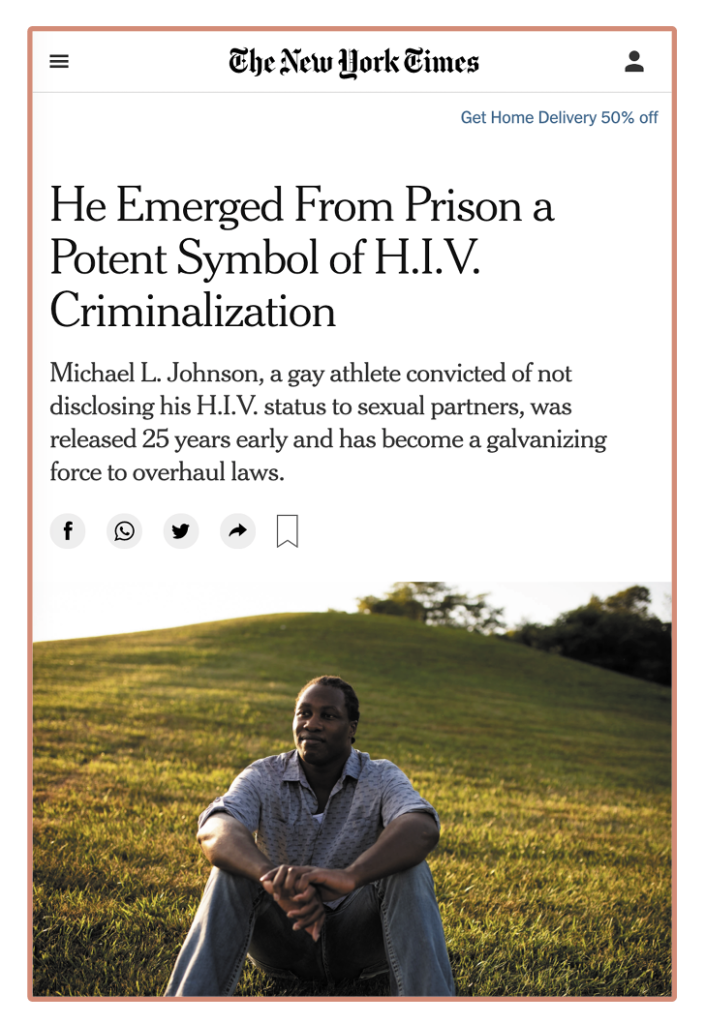 In Missouri in 2013, Michael L. Johnson, a young Black man, was arrested for allegedly failing to report to a white male sexual partner that he was living with HIV before engaging in condomless sex. In 2015, he was originally sentenced to thirty years in prison for “reckless transmission of HIV”– a sentence longer than almost any other crime in the state including the state’s average for second degree murder.The nexus of HIV stigma and the prison industrial complex continue to disproportionately impact Black gay men. According to the Centers for Disease Control, if current rates continue: 1 in 2 Black gay men who have sex with men will contract HIV in their lifetimes[4].
In Missouri in 2013, Michael L. Johnson, a young Black man, was arrested for allegedly failing to report to a white male sexual partner that he was living with HIV before engaging in condomless sex. In 2015, he was originally sentenced to thirty years in prison for “reckless transmission of HIV”– a sentence longer than almost any other crime in the state including the state’s average for second degree murder.The nexus of HIV stigma and the prison industrial complex continue to disproportionately impact Black gay men. According to the Centers for Disease Control, if current rates continue: 1 in 2 Black gay men who have sex with men will contract HIV in their lifetimes[4].
Journalist and Northwestern Professor Steven Thrasher detailed for Buzzfeed News how a “Black body” was put on trial and charged under a 1988 Missouri statute which remains one of the harshest HIV criminalization laws in the country. Thrasher reports how anti-gay and anti-Black animus often converge and come to the fore in HIV criminalization. Often referred to in news coverage by his social media screen name “Tiger Mandigo,” the media also publicized photos of Johnson shirtless to accentuate a large muscular frame. Thus a college student quickly became the symbol of the deeply entrenched and troubled history of Black men’s hypersexualization in America. A nearly all-white jury, all over the age of 40 and composed entirely of non-LGBTQ people not living with HIV, convicted Michael Johnson. He was sentenced to 30 years in prison, a longer sentence than that imposed on convicted murderers. An appeals court ordered him released after serving five years, ruling his trial was “fundamentally unfair.” The perfect storm of anti-Blackness, homophobia, American shame around sex, and lack of reliable information around HIV created a media spectacle which misrepresented HIV as a “terminal illness” and went against best scientific practices.
Across all stories featuring or mentioning HIV, including coverage of crimes, journalists must do better to report the latest science and research showing HIV is preventable and when properly treated, untransmittable.
Media must also create opportunities for people living with HIV to tell their own stories, specifically around conversations about authentic experiences, full healthy sexual lives, and how antiretroviral therapies make it possible to thrive while living with HIV. This research shows that there is an opportunity for stigma to be lessened by showing in the media those who are living and thriving. People living with HIV need to be represented across race, sexuality, and gender identity to feel empowered to tell their stories and speak truth to power.












